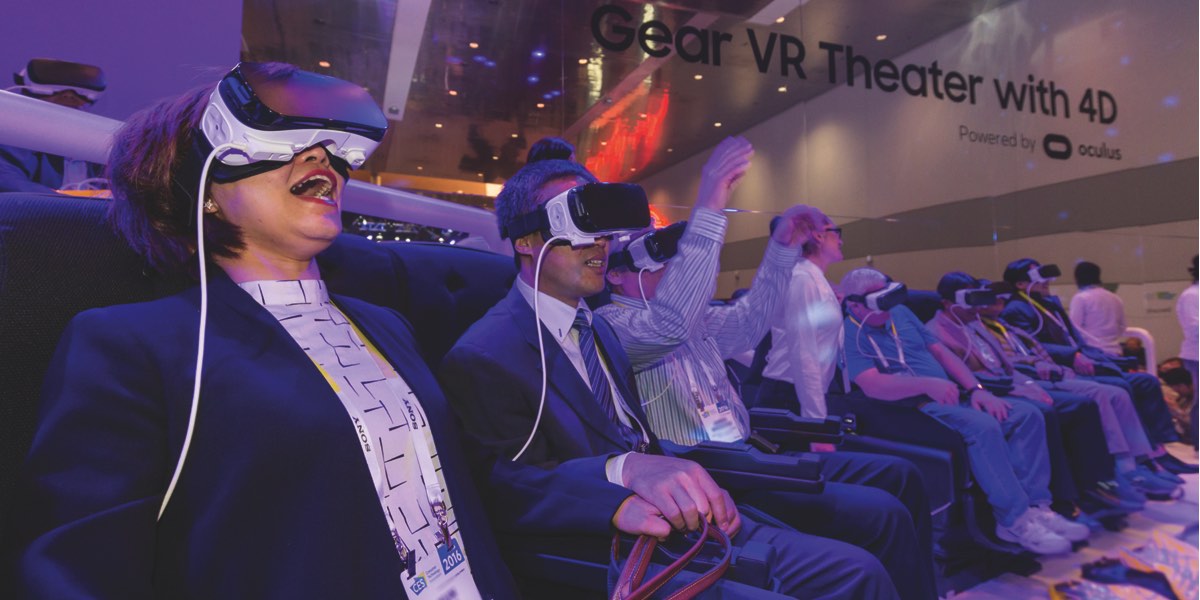Sydney-based production house Rapid VR will today front a panel at the SXSW Interactive festival in Austin, Texas, showcasing their expertise with virtual reality in the tourism space. Rapid VR recently teamed with Qantas, Samsung, and Hamilton Island to virtually transport viewers to the Great Barrier Reef.
The panel will be fronted by Rapid VR co-founders Dave Klaiber and Susannah DiLallo, alongside Rapid VR’s director of technology Dan White and Qantas head of digital and entertainment Jo Boundy. “Virtual Tourism: VR, 360 and the Travel Industry” examines the new 360˚ video technology that enables travellers to sample their next holiday destinations virtually via computers, mobile devices, and VR headsets like the Samsung Gear VR.
Virtual tourism is just one of the possibilities that virtual reality affords, with Rapid VR on the forefront of developing quality VR experiences in Australia. Working as part of the larger Rapid Films, which specialises in bigger budget TV commercials and documentaries, Rapid began exploring VR commercially with a 360 video for Samsung. The video, filmed underwater with a shark, was a gamble for Rapid who had to purchase untested equipment for it.
“We did some tests and literally three or four days before the shoot Susannah was up late trawling the net and found this underwater 360 rig out of France. It was an exorbitant price. At that stage, it was around 10,000 euros. It was a leap of faith.
“It came the day before we shot and I went to a mate’s pool to do a test. Our head of technology at that stage stitched it together and found it worked. The next day we were on a plane to South Australia and diving with great white sharks. We got some of the best shark footage that’s ever been recorded.”
Another shoot tested their production and technical capabilities in an entirely different way with the team hired to video stream a live birth through virtual reality. With the father a FIFO worker in Chinchilla and the mother at home in Perth, the Rapid VR team bought specialised live streaming VR equipment and cameras, placing a satellite dish on the roof of the hospital.
The event was a once-in-a-lifetime moment, so the team needed to ensure that everything would go to plan. “If we didn’t get it during that moment, you can’t put the baby back in,” explained DiLallo with a laugh.
A commitment to quality in the VR work done by Rapid VR is how DiLallo and Klaiber are defining themselves in this emerging industry. “We’ve come from a background of award-winning TVCs from all around the world,” Klaiber explained. “We employed engineers and worked out that we could shoot things without people seeing how they’re being shot. One of the most famous things we’ve just done is surfing in Tahiti. We have the surfer there and you’re like ‘where the hell is the camera?’ and it’s all hidden. We spend a lot of time hiding our things. A lot of big VR companies in the states use a black spot in the bottom of their thing where all their rigging goes. You’re in an experience and you look around, but then look down and you see their logo in a black spot and it takes you out of the experience.”
While early VR videos with edit points have proven disorientating for viewers, Klaiber is eager to point out the complexity of shooting in VR and dispels the notion that you can’t include edits in a VR experience: “You can cut with 360 video and you can make it seamless. There are clever ways about going about it.”
The team at Rapid VR is open to exploring narrative videos moving forward, but they’re cautious, having seen flimsy storytelling that doesn’t work to the strengths of the medium.
“You view a movie. You experience VR,” Klaiber said.

